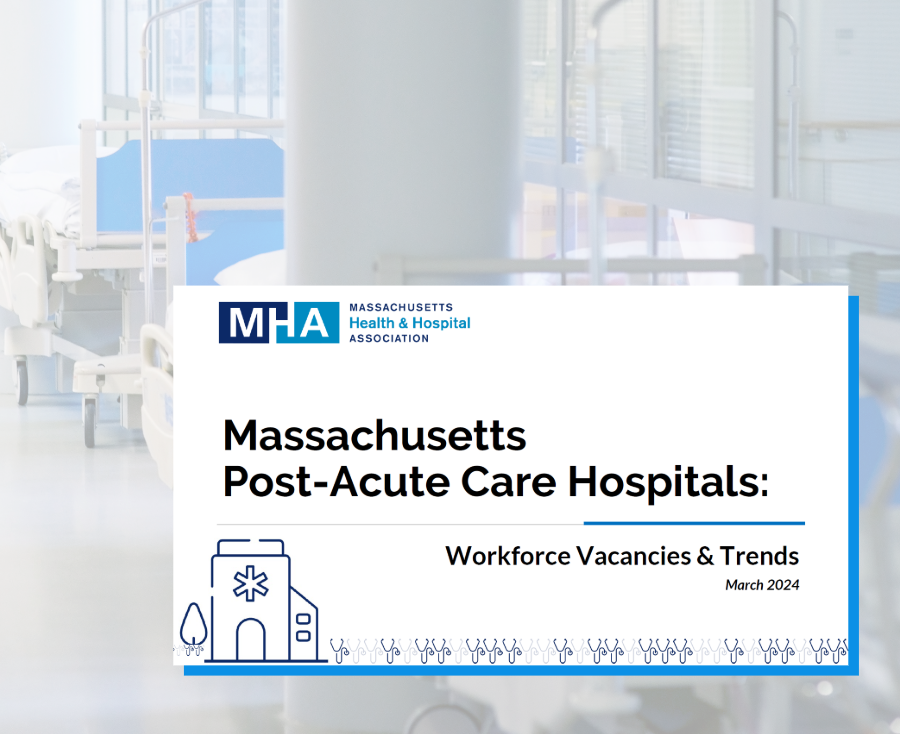Massachusetts Post-Acute Care Hospitals: Workforce Vacancies & Trends

A new MHA survey found that there are more than 500 open positions within Massachusetts post-acute care hospitals, mainly among Licensed Practical Nurses and Registered Nurses , and that double-digit wage increases are needed to attract workers to post-acute facilities.
MHA sent the survey to 12 inpatient rehabilitation hospitals (IRFs) and long-term acute care hospitals (LTACHs) across the state. IRFs are healthcare organizations that provide intensive rehabilitation therapy, physician supervision, and nursing care, with physicians, nurses, and therapists coordinating that care. LTACHs serve patients with more complex needs than patients who go to IRFs. These patients require longer hospital stays (often more than 25 days) and require prolonged, highly specialized care.
View the Report:
MHA conducted the survey in 2023, seeking information on 56 positions to see how many were filled and the average hourly wage they were paid both before the pandemic (2019) and in 2023. The response rate among 12 IRFS and LTACHs accounts for 60% of all post-acute care hospital beds in Massachusetts.
Total spending for temporary contract labor among all responding hospitals to-date increased from $1.1 million in 2019 (pre-pandemic) to $12.5 million in 2023 – an uptick of more than 11 times the 2019 figure, MHA’s survey found. The post-acute care hospitals report that such temporary labor expenses are unsustainable for these their organizations.
Overall, the aggregate vacancy rate for positions in MHA member post-acute care hospitals was 9.4%. However, the vacancy rate for LPNs (24.1%) and R.N.s (14.8%) was much higher. There are 534 open positions and 432 vacant full-time-equivalent positions across Massachusetts post-acute care hospitals.
Other healthcare positions, known as “allied health” roles, also showed vacancies, with rehabilitation aides, pharmacists, and physical therapists all in especially short supply.
When asked what support is needed to attract and retain staff, the post-acute hospitals placed additional wages, salaries, and bonuses at the top of the list, followed by the creation of career ladders for certified nurses aides and RNs.

 Massachusetts Health & Hospital Association
Massachusetts Health & Hospital Association